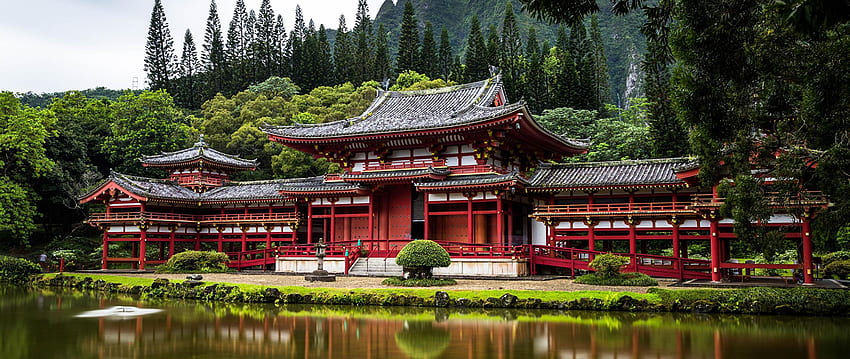 Visitors to Japan can immerse themselves in the country’s rich cultural heritage by exploring the Iconic Shrines in Japan, which offer a blend of historical significance and breathtaking natural beauty.
Visitors to Japan can immerse themselves in the country’s rich cultural heritage by exploring the Iconic Shrines in Japan, which offer a blend of historical significance and breathtaking natural beauty.
Japan, a land steeped in tradition and spirituality, is home to thousands of shrines that reflect its rich cultural heritage. Among these sacred places, some stand out not only for their historical significance but also for the unique experiences they offer visitors. From tranquil gardens to breathtaking architecture, each shrine tells its own story, inviting pilgrims and tourists alike to embark on a journey of discovery.
In recent years, the concept of shrine rankings in Japan has gained popularity, providing a guide to the most revered and iconic sites across the country. These rankings consider various factors such as cultural importance, visitor satisfaction, and unique offerings. Whether you’re a seasoned traveler seeking profound spiritual experiences or a curious adventurer eager to explore the picturesque landscapes, understanding these shrine rankings can enhance your journey through Japan’s divine heritage.
Historical Significance of Shrines
Shrines in Japan hold deep historical significance, reflecting the country’s spiritual heritage and its connection to nature and history. As centers of worship, they serve as places of devotion to the Shinto gods, or kami, embodying the beliefs and practices that have shaped Japanese culture over centuries. Many shrines are located in sites that are considered sacred, intertwining with the landscapes and the natural world, emphasizing the Shinto belief in the sanctity of nature.
Throughout history, the role of shrines has evolved, particularly during periods of political change. In ancient times, they were often sites of power and influence, where rulers would seek legitimacy and divine favor. The Heian period marked a flourishing of shrine culture, and with the emergence of different shrines came unique architectural styles and rituals. This evolution has led to a diverse array of shrines across Japan, each with its own distinct character yet united in their purpose of reverence.
Today, shrines continue to play a crucial role in Japanese life, serving not just as spiritual centers but also as custodians of history. Many shrines celebrate festivals that have been passed down through generations, preserving traditions and stories that might otherwise fade away. The significance of these shrines goes beyond the spiritual; they are vital to understanding Japan’s cultural identity and the historical narrative that has shaped its people.
Criteria for Ranking Shrines
The ranking of shrines in Japan can be influenced by a variety of factors that reflect their cultural, historical, and spiritual significance. One primary criterion is the shrine’s historical importance, which often includes its age, the events associated with it, and its role in the local or national narrative. Shrines with deep-rooted traditions and connections to significant historical figures tend to receive higher rankings due to their impact on Japanese culture and society.
Another important criterion is the number of visitors and pilgrims the shrine attracts each year. Popularity can be an indicator of a shrine’s relevance and appeal, as it often correlates with how well the shrine is maintained and the quality of the experience it provides. Shrines that host major festivals or events, thus drawing large crowds, often rank higher due to their active engagement with the community and the preservation of cultural practices.
Lastly, the aesthetic and architectural qualities of the shrine play a crucial role in its ranking. Shrines that showcase unique architectural styles, beautiful natural settings, or artistic features can enhance their appeal. The overall atmosphere of the shrine contributes to its spiritual allure, making it a place not only for worship but also for contemplation and appreciation of beauty. These criteria combined create a comprehensive framework for evaluating shrine relevance in Japan’s rich tapestry of spiritual heritage.
Top Ranked Shrines in Japan
When exploring the spiritual landscape of Japan, several shrines stand out due to their historical significance, architectural beauty, and the vibrant traditions that surround them. Among the most prominent is Ise Jingu, located in Mie Prefecture. This shrine is dedicated to the sun goddess Amaterasu and is considered the most sacred Shinto shrine in the country. Its significance lies not only in its religious importance but also in its architectural elegance, consisting of a series of structures that embody the Shinto belief in purity and simplicity.
Another noteworthy shrine is Fushimi Inari Taisha in Kyoto, famous for its thousands of vermilion torii gates that create stunning pathways up the sacred Mount Inari. Dedicated to Inari, the deity of rice and agriculture, this shrine draws numerous visitors who seek to worship or simply enjoy the scenic routes. The vibrant gates symbolize the connection between the spiritual and physical worlds and represent the gratitude of the worshippers for the blessings they have received.
Finally, Meiji Jingu in Tokyo is a prime example of a shrine that blends tradition with modernity. Surrounded by a lush forest, this shrine honors Emperor Meiji and Empress Shoken, and it serves as a peaceful retreat for city dwellers and tourists alike. Its approach, lined with impressive trees and a tranquil atmosphere, offers visitors a sense of serenity. Meiji Jingu is also a popular spot for traditional Japanese weddings, showcasing the enduring legacy of Shinto practices in contemporary Japan.
Visitor Experiences and Cultural Impact
Visiting Japan’s top-ranked shrines offers an immersive experience that transcends mere tourism. Pilgrims and tourists alike are drawn to the serene beauty of the landscapes that often surround these sacred sites. The rituals performed in these places, from purification practices at water basins to the harmonious sounds of traditional music during festivals, create a unique atmosphere that allows visitors to connect deeply with Japan’s spiritual heritage. Many report feelings of peace and enlightenment, greatly influenced by the natural and architectural beauty of the shrines.
The cultural impact of these shrines goes beyond personal experience; they serve as focal points for community gatherings and festivals. Each year, thousands of visitors participate in various seasonal celebrations, which not only honor tradition but also foster a sense of belonging among attendees. Local artisans showcase crafts and cuisines during these events, helping to preserve age-old customs while energizing local economies. This symbiotic relationship between shrines and communities reinforces the cultural identity of the regions and ensures that traditions are passed down through generations.
The rankings of shrines often reflect their historical significance and visitor popularity, which can shift over time. As new generations explore these sites, they contribute to the evolving narratives surrounding them. Social media platforms amplify this effect, as shared experiences inspire others to visit. Ultimately, shrine rankings are not just about the places themselves but also about the lasting impressions they leave on visitors, shaping their understanding of Japan’s rich cultural tapestry and spiritual landscape.

